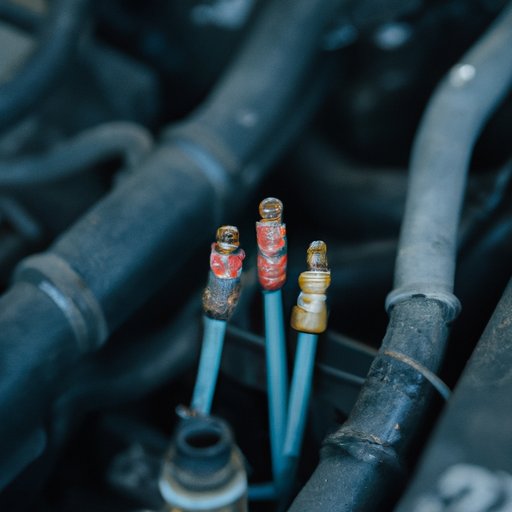Introduction
An ignition coil is an essential component of a car’s ignition system, responsible for transforming the low voltage from the battery into the thousands of volts necessary to create an electric spark in the spark plugs, which then ignite the fuel-air mixture in the engine’s cylinders. When an ignition coil fails, the engine will either misfire or not start at all. It is important to identify and replace a faulty ignition coil as soon as possible to avoid further damage to your vehicle and costly repairs.
What Are the Symptoms of a Failing Ignition Coil?
A failing ignition coil can cause a variety of issues with your car’s performance, including:
Sputtering or Misfiring Engine
One of the most common signs of a faulty ignition coil is an engine that misfires or sputters when accelerating. This is caused by the ignition coil not being able to generate the high voltage needed to fire the spark plug, resulting in an incomplete combustion cycle.
Check Engine Light is Illuminated
The Check Engine Light is typically the first indicator that something is wrong with your car’s ignition system. If the Check Engine Light is illuminated, it is important to have your car inspected as soon as possible to determine the cause.
Poor Fuel Economy
Faulty ignition coils can also lead to poor fuel economy due to the engine not running at its optimal efficiency. This can result in higher fuel costs and increased emissions.

How to Diagnose a Bad Ignition Coil
In order to diagnose a bad ignition coil, you will need to use a multimeter to test the resistance of the coil. The multimeter should be set to ohms and placed across the positive and negative terminals of the coil. If the reading is outside of the specified range for your vehicle, then the coil is bad and needs to be replaced.
You should also visually inspect the coil for any signs of physical damage such as cracks or corrosion. This can indicate that the coil has failed and needs to be replaced.

The Cost Of Replacing a Faulty Ignition Coil
The cost of replacing a faulty ignition coil can vary depending on the make and model of your vehicle, as well as the type of coil being replaced. Some factors that can influence the cost of replacing an ignition coil include:
Labor Costs
Labor costs can vary depending on the complexity of the job and the labor rate of the mechanic. Generally, labor costs can range from $50-$150.
Parts Costs
Parts costs can also vary depending on the make and model of your vehicle. Most ignition coils cost between $50-$100.
How Long Can You Drive With a Bad Ignition Coil?
It is not recommended to drive with a bad ignition coil as it can lead to further damage of your vehicle and costly repairs. Driving with a failing ignition coil can cause short-term effects, such as increased emissions, poor fuel economy, and engine misfires. Over time, the increased stress on the engine can lead to more serious long-term effects, such as engine damage and costly repairs.
According to research conducted by the University of Michigan, “Driving with a bad ignition coil can damage other components of the engine, such as spark plugs, and lead to costly repairs.”
Tips for Keeping Your Ignition Coil in Good Condition
The best way to avoid having to replace an ignition coil is to keep it in good condition. Here are some tips for keeping your ignition coil in good condition:
Regular Maintenance
Regular maintenance is key to ensuring your vehicle’s ignition system is in good condition. Make sure to follow the manufacturer’s recommended maintenance schedule for your vehicle.
Follow Manufacturer’s Recommendations
Be sure to follow the manufacturer’s recommendations for your vehicle when it comes to inspecting and replacing worn parts, such as spark plugs and ignition coils.
Replace Worn Spark Plugs
Worn spark plugs can cause the ignition coil to fail prematurely, so it is important to replace them regularly according to the manufacturer’s recommendations.
Conclusion
Driving with a bad ignition coil can lead to further damage of your vehicle and costly repairs. It is important to identify and replace a faulty ignition coil as soon as possible. This article explored the symptoms of a failing ignition coil, how to diagnose it, replacement costs, and tips for keeping your ignition coil in good condition. Regular maintenance and following the manufacturer’s recommendations are key to ensuring your vehicle’s ignition system is in good condition.
(Note: Is this article not meeting your expectations? Do you have knowledge or insights to share? Unlock new opportunities and expand your reach by joining our authors team. Click Registration to join us and share your expertise with our readers.)
